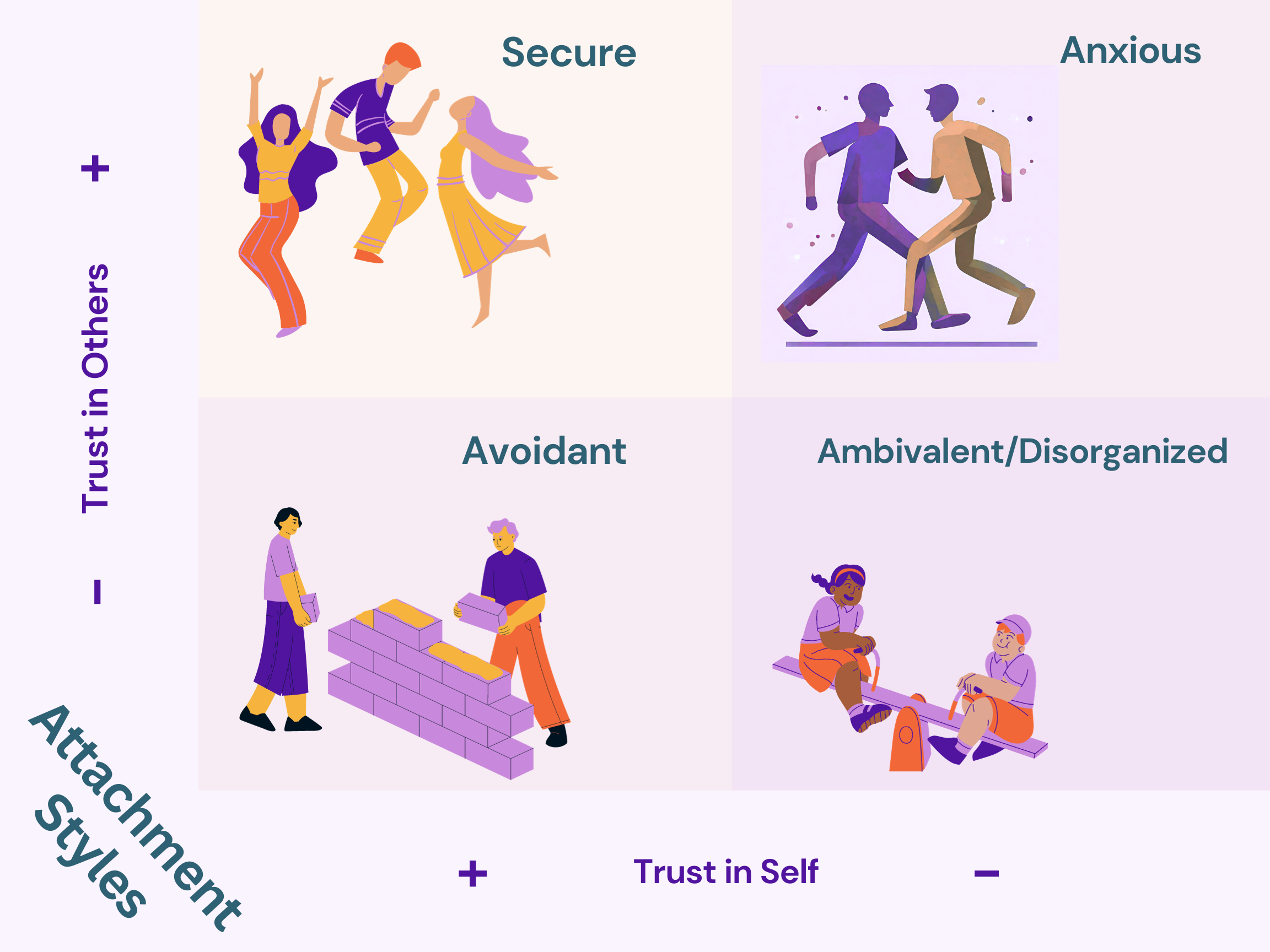Attachment for Beginners
Have you ever wondered why you find yourself drawn to the same type of people? Maybe for you it’s been a good thing; you’re the quiet, reserved type whose confidence is enhanced by being around your outgoing and effervescent friend. Or, you’re the impulsive type whose mindfulness is improved around your organized and thoughtful partner. On the other hand, it might have been a dangerous thing for you; you’re a self-effacing people-pleaser who somehow always ends up with a partner who takes advantage of your good nature. Or you’re afraid of rejection so you find yourself drawn to someone who’s emotionally unavailable to begin with to avoid the risk. Whatever the particulars of your own relational patterns, there are some universal factors responsible. In part, personality, temperament, and culture can play a role in who you like and what you value in a person. But a big factor in shaping your relational patterns and even in your view of yourself has to do with something called attachment. This is a very basic introduction to attachment theory to help you get the lay of the land. At the end of this post I’ve included a list of resources for further reading in case your interest is piqued.
In a nutshell, attachment theory is the idea that our earliest relationships (those with our parents or caregivers) are formative for our development. The way our parents show up for us (or don’t) teaches us about who we can trust, how to get what we need in relationships, and how to feel about ourselves. We are inherently relational beings who learn the most fundamental aspects of being human through relationship. Think of how a baby learns to talk. She hears her parent’s voices, their inflection, their choice of words, until one day she begins to imitate the sounds that she hears. At first it’s not more than just babbling. But overtime, with lots of practice, the babbling conforms to certain patterns of intonation, and eventually those sounds start to resemble words and sentences until the child is fully able to communicate verbally. A similar process happens with attachment relationships and our emotional development.
One of our universal needs as human beings is the need for attunement. This means that we need others to notice and respond to what we feel. When we’re sad and crying, we need others to respond with care and concern. When we’re scared or lonely, we need others to comfort us. Emotions are a language that we know long before we learn to speak, and it helps us communicate with our parents about what we are needing from the moment we are born. When our parents are able to respond most of the time to those emotional signals, we develop what’s called a secure attachment style. We learn that when have a need (i.e. poopy diaper, scraped knee, hunger) we can count on our parents to see our need and to meet it. This allows us to develop a world view in which we believe that we can count on others. In turn, because our parents are emotionally healthy and able to attune to our emotional needs, we have the stable and supportive environment we need to learn that we are important, worthwhile, capable, and competent. We have models who help us learn to do things on our own, who celebrate our successes, and guide us in our failures. We then add onto that worldview the belief that we can count on ourselves as well.
However, often people grow up in homes where their parents misattune to their kids. I’m not talking about once or twice – no parents can meet their child’s needs perfectly, and they don’t have to. The kind of misattunement I’m talking about is repetitive. It’s a pattern of failing to respond to their child’s emotional needs. A child might cry and he’s told to be brave, suck it up, dry his tears. Or a child gets her feelings hurt and is criticized for being too sensitive. Or maybe a child seeks validation for learning a new skill and her mom doesn’t notice at all. It can happen in subtle ways or overt ways, but the result is the same – the child develops an insecure attachment style. There are three main types of insecure attachment (see the illustration for reference).
The first, an anxious attachment style, is developed when parents are an inconsistent source of attunement and comfort. They care, but they are preoccupied. Preoccupied with working two jobs to put food on the table, with their own stress and worries, or the parenting style they received as a child. Something prevents them from being able to hold their child’s emotions and help her make sense of them. Sometimes they are able to comfort their child when she needs it, but often they are not. This child learns that they can rely on their parents sometimes, but that attunement isn’t consistent enough for them to develop a trust in themselves. They are, instead, overly dependent on the emotional needs of their caregivers. Like a slot machine, the good feeling she gets when her parents attune to her keeps her continually coming back for more, even though that good feeling only happens once every 20 times. People with an anxious attachment style can be codependent, clingy, or struggle with separation anxiety. They tend to be people-pleasers with an insatiable emotional hunger. They may struggle to know who they are or what they need because they’ve had to conform to what their parents need them to be.
What happens when a parent is more than inconsistent in their attunement? What happens when they consistently fail to attune to their child? These parents are emotionally unavailable, or in more extreme cases, neglectful. This leads a child to develop an avoidant attachment style. He learns that no matter how hard he cries or upset he gets, he can’t count on his parent to meet his emotional needs. He learns from a young age that if he needs something, it’s up to him to take care of it. He develops a low level of trust in others, but a high level of trust in himself. This is the person who always has their walls up, who doesn’t let others get too close. He has a high level of separateness and almost an allergy to intimacy because it’s an atrophied muscle.
Last of all the insecure attachment styles is the ambivalent or disorganized attachment style. This style accounts for a very small portion of the population and is a result of having an extremely chaotic or abusive home life. Think of this style as a seesaw between anxious and avoidant attachment. In an unstable home environment, a child will swing back and forth to whatever strategy is useful in the moment. Sometimes anxious, sometimes avoidant. They fail to develop a sense of trust in others as well as in themselves. The external chaos and inconsistency they experience forms who they are. They experience themselves as chaotic and inconsistent as they relate to others.
Why is all of this important? For starters, it can give us some validation in knowing there is a good reason for why we have the relational patterns that we do. But more importantly, it offers a framework of understanding that also contains hope for change and growth. If we grew up in homes where attunement was inconsistent or nonexistent, and we can find a safe and trustworthy person to build a relationship with, we can heal our attachment wounds and move toward a more secure attachment.
If you think you might have an insecure attachment style, therapy can be a great place to heal those attachment wounds. Reach out to us today and schedule an appointment. Our therapists are eager to provide the safe and trustworthy therapeutic environment that you need. Thanks for reading!

Additional Resources
Gabor Mate on Attachment Dilemmas
Attachment Theory in Practice by Susan Johnson
Attached by Levine & Heller

